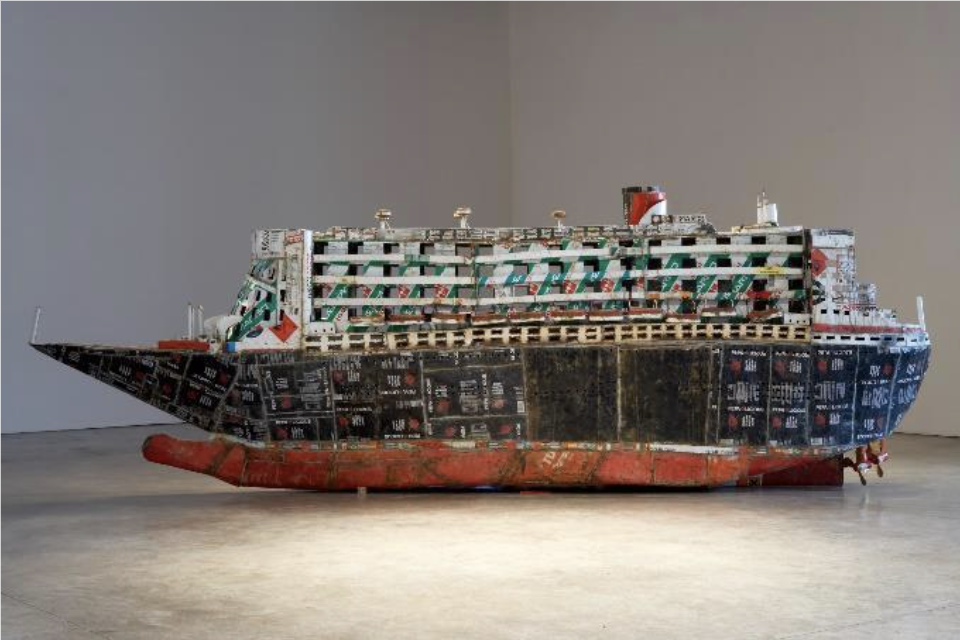Mohamed Nasheed, Maldivian, born 1967
Underwater Cabinet Meeting, Maldives, October 17, 2009, 2009
Seated at his desk with the Maldives flag behind him, President Nasheed signs a commitment to make the country carbon-neutral within ten years. This would not be an unusual event or photograph if not for the fact that President Nasheed and his cabinet are fifteen feet underwater, a view of the surface just in the background. With the weight of the ocean pushing down on them, the signers continue their work as normal, not oblivious but focused on the work ahead. Outfitted in scuba-gear, the photo and underwater-signing event directly link the policy actions of the Maldives government to the increasingly urgent threat of climate change. As a small island nation, the Maldives face rising sea levels and coastal erosion, despite the fact that the global solution does not lie solely on their shoulders. This photo forces viewers to confront head on where the world will soon be without immediate action to save it. Label by Caitlin Blomo
Maldivian president Mohamed Nasheed signs a bill promising his nation’s carbon neutrality within a decade. Nasheed sits behind his desk with a pen and the large bill in hand, name placard in front of him and flag of the Maldives behind him in the right third of the composition. The official government photo is unremarkable, with the notable exceptions that the bill-signing ceremony is underwater and Nasheed is in scuba gear, yellow goggles trained on the bill. The image iterates the performative possibilities of government action. The media attention of the spectacle allowed Nasheed to call on the governments of wealthier nations, those who contribute most to climate change, to put forth their own plans to achieve carbon neutrality. Label by Morgan Brittain




